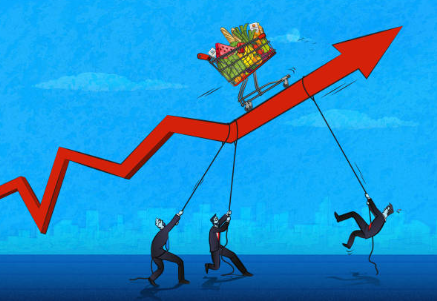How Motivation Affects Consumer Behaviour?
There are a number of factors that affect consumers’ decision-making, including their motivation levels. These factors include the importance of the purchase, whether the purchase is new or familiar, and the cost and value of the product.

Selfpause Affirmation App
Download the app to get 1,000’s of affirmation meditations and everything you need to write, record and listen to your own.
Extrinsic motivation

There are two general types of motivation: intrinsic and extrinsic. Both types have pros and cons. Which is most effective depends on the situation. Extrinsic motivation is more effective when a consumer is rewarded for completing a task or for buying a product.
Extrinsic motivation is what prompts a person to do something for a reward or to avoid a punishment. It is a central tenet of economics that people respond to incentives, which in turn influence their actions. Extrinsic motivation has a variety of sources, and studying both types of motivation is important in the management of any organization.
Extrinsic motivation is most effective when rewards are given sparingly and not in excess. When rewards are given too frequently, they can lead to an overjustification effect and a decrease in intrinsic motivation. Similarly, material rewards affect a person differently than non-material rewards. Young children who receive material rewards were less likely to engage in helpful behaviour in the future than children who receive non-material rewards.
The role of religion in determining consumer behaviour has been studied extensively. There are two dimensions of religiosity in consumer behaviour, as identified by researchers. In the short term, extrinsic motivations may be useful but not necessary. The World Wide Web can be a powerful tool, but it has not had a decisive impact on consumer behaviour.
Extrinsic motivation can be highly effective, but it must be taken into consideration that it is not the only type of motivation that motivates people. Extrinsic motivation can be particularly effective when a person has to perform a difficult task or deal with stressful circumstances.
Understanding how human motivation works can greatly benefit businesses. It can affect everything from advertising and marketing to customer support. Understanding what makes consumers feel happy and satisfied can help entrepreneurs make the most effective use of their resources. It is also crucial for business owners to understand how to communicate with customers. Understanding how to make consumers feel good about their purchases can help build stronger bonds, which can lead to advocacy and loyalty. If a business owner can create an environment that fosters this, they will be on the way to organic growth.
Ultimately, understanding how consumers buy and why they buy is key to developing the e-tailing industry. This study demonstrates that consumer incentives are critical to the success of e-commerce.
Intrinsic motivation

Intrinsic motivation is a powerful motivator for a variety of tasks and activities. Unlike extrinsic motivation, which is driven by external factors such as money and recognition, it is a more lasting and personal feeling. It often motivates people to perform tasks because they enjoy them, even when the outcome is not a desirable one.
There are many different types of motivations that people use to determine which behaviors are the most desirable. For example, extrinsic motivations involve the pursuit of a reward or avoidance of a punishment. The main difference between intrinsic and extrinsic motivation is that the latter is often the source of more favorable outcomes. Regardless of the type of motivation, each one affects behavior differently.
Although different theories have been proposed to explain the nature of motivation, the most widely accepted theory is based on human needs. Humans need to satisfy biological and psychological needs in order to survive. These needs include autonomy and relatedness. Intrinsic motivations include the desire to learn or pursue a personal goal.
Extrinsic motivations involve performing an action for a reward, and these tend to diminish over time. This type of motivation is important for consumer behavior because it shapes consumer expectations. Moreover, it affects the ability to focus on training, performance, and preparation. Hence, it is essential to distinguish between extrinsic and intrinsic motivations.
Understanding consumer motives is vital for developing an e-tailing business. Without a clear understanding of the motivational factors, consumers may not buy products or services they do not need. This means that companies need to offer incentives that appeal to consumers’ needs and desires. Moreover, consumers should not make decisions based on emotion alone.
Consumer behaviour is a complex phenomenon. Many factors, including economic factors, affect it. The role of marketing in consumer behaviour has to be understood. Marketing strategies must consider this, and a strong understanding of consumer psychology will help businesses reach their goals. And while we cannot predict the future, we can learn how to influence the motivations of consumers to create profitable sales.
Marketing is rooted in psychology, and failure to understand these factors can inhibit the acquisition of new customers and restrict relationships with existing ones. The two main types of motivation are extrinsic and intrinsic. Gamification attempts to tap into both types of motivations and create an e-commerce environment that benefits customers.
Consumption motives

Consumer behaviour can be influenced by different types of consumption motives. These motives vary from person to person and are often based on culture or subcultures. These subcultures can include religions or interest groups. They may also be influenced by a person’s role in society. In addition, consumption motives may be affected by socioeconomic factors. In some societies, people may want to rise up the social hierarchy, and this can affect their purchasing behaviour.
Consumers typically select product classes that reflect their life style and fundamental values. Other motives relate to social status and prestige, which are related to the way a product affects others. For example, some products are chosen solely because of their conspicuous features. Alternatively, consumption motives may be motivated by availability or accessibility. In some cases, a person may choose a particular brand based on a price reduction.
The study of motivational motives is becoming increasingly important in marketing. It can help marketers develop more effective and innovative roadmaps and improve their chances of success. In the 1950s, Ernest Dichter developed a system of consumption motives that identified twelve different motivations. Each of these motives results in a different product choice. Examples of these motives include power, masculinity and virility, security, eroticism, and mastery of one’s environment.
Psychological factors influence the way a consumer behaves. Several recent models of consumer decision making incorporate psychological insights, such as expectancy value theory and lexicographic model. However, the neoclassical economic model relies on assumptions about consumer preferences that ignore social influences and the social context in which consumers live.
Reinforcement motives

Consumer behaviour is shaped by the way consumers experience rewards. In some cases, consumers are rewarded for actions that are expected to result in a desired outcome. A common example is winning money on a slot machine or by purchasing lottery tickets. These types of rewards have very high response rates and increase in reinforcer value as more responses are received.
Reinforcement involves a consumer’s reaction to a cue and is a learning process. As such, marketers must understand how consumers learn. As a result, they should use rewards to influence future responses. Reinforcers are able to influence consumers’ behaviour by increasing the chances of responding to the same stimulus in the future.
Reinforcement can be either positive or negative. Positive reinforcement encourages repeating a specific behavior, while negative reinforcement encourages an undesirable one. Both types of reinforcement can be useful for different businesses. However, negative reinforcement is not always helpful to a business and may actually alienate customers.
There are also some instances where punishment is used. If a person is punished for a habit or an action, a person will be less likely to repeat the same behaviour in the future. For example, a punishment that involves a cool breeze can be seen as positive. The cool breeze will remove the hot air.
A positive reinforcement strategy may encourage customers to return to a company, which increases brand loyalty and the likelihood of future purchases. It has also been shown that consumers prefer businesses with reward systems. Moreover, first-time buyers are more likely to purchase from a company that offers perks or rewards programs.
Our Top FAQ's
Motivation plays a key role in a consumer’s decision-making process by influencing the goals and desires that drive their behavior. For example, a consumer who is motivated by the desire for convenience may choose to shop at a store that is closer to their home, even if it means paying a higher price. On the other hand, a consumer who is motivated by the desire for the best value for their money may be willing to drive further to find the lowest prices.
Different types of motivation can lead to different consumer behaviors. For example, a consumer who is motivated by the desire for social status may be more likely to purchase luxury brands, while a consumer who is motivated by the desire to protect the environment may be more likely to purchase eco-friendly products.
Personal values and beliefs can also impact a consumer’s motivation. For example, a consumer who values sustainability and environmental protection may be more motivated to purchase products that are made from eco-friendly materials or that have a smaller carbon footprint.
Marketers can use understanding of motivation to effectively target and communicate with consumers by identifying the motivations that are most relevant to their target market and crafting messages and marketing campaigns that appeal to those motivations.
The intensity of motivation can also affect consumer behavior. A consumer who is highly motivated to purchase a product or service is more likely to take action, such as making a purchase or sharing information about the product with others. On the other hand, a consumer who is less motivated may be less likely to take action.
